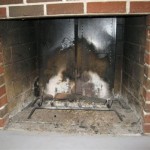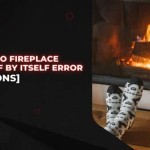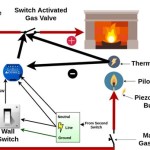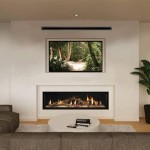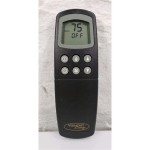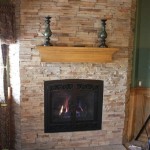Understanding Fireplace Inserts: A Comprehensive Guide
Fireplace inserts offer an efficient and aesthetically pleasing way to upgrade an existing masonry or zero-clearance fireplace. Unlike traditional open fireplaces that lose a significant amount of heat up the chimney, inserts are designed to provide substantial heating to the room in which they are installed. They are self-contained units that are placed within the firebox of an existing fireplace, transforming it into a more effective heat source.
The primary function of a fireplace insert is to improve heating efficiency. Open fireplaces are notoriously inefficient, often drawing warm air from the room and sending it up the chimney while simultaneously pulling cold air in from other areas of the house. This creates a net loss of heat and can increase heating bills. Fireplace inserts address this issue by creating a closed combustion system and utilizing materials that radiate heat effectively. This results in a significant reduction in heat loss and a noticeable increase in room temperature.
Fireplace inserts are available in a variety of fuel types, including wood, gas, and electric. Each type offers distinct advantages and disadvantages, making it crucial to consider individual needs and preferences before making a purchase. Factors such as fuel availability, desired heat output, maintenance requirements, and budget should all be taken into account.
Fuel Type Considerations
Choosing the appropriate fuel type is a critical decision when selecting a fireplace insert. Each fuel option presents unique characteristics that affect performance, cost, and convenience.
Wood Inserts: Wood-burning inserts offer a classic and traditional aesthetic. They provide a high heat output and can be relatively inexpensive to operate if wood is readily available. However, they require manual loading of wood, regular cleaning of ash, and proper storage of firewood. They also require compliance with local regulations regarding wood burning, which may include restrictions on certain types of wood or specific emission standards. Properly seasoned wood is crucial for efficient burning and minimizing creosote buildup, which can pose a fire hazard.
Gas Inserts: Gas inserts offer convenience and ease of use. They can be turned on and off with the flip of a switch or the press of a button on a remote control. They provide consistent heat output and require minimal maintenance. Gas inserts are available in both natural gas and propane models, allowing for flexibility depending on available fuel sources. However, they are typically more expensive to operate than wood inserts, as natural gas and propane prices can fluctuate. They also require professional installation by a qualified gas technician to ensure safety and proper operation.
Electric Inserts: Electric inserts offer a clean and convenient heating solution. They do not require venting, making them easy to install in a wide range of locations. They provide supplemental heat and can be used with or without the heating function, allowing for year-round enjoyment of the flame display. Electric inserts are generally less expensive to purchase than wood or gas inserts, but their heating capacity is typically lower. They are a good option for smaller spaces or for providing ambiance without the need for significant heat output.
Installation and Venting Requirements
Proper installation is essential for the safe and efficient operation of a fireplace insert. Installation procedures vary depending on the type of insert and the existing fireplace. It is strongly recommended to have a qualified professional install any fireplace insert, particularly gas and wood-burning models.
Wood and gas inserts typically require a chimney liner to be installed. A chimney liner is a metal pipe that runs the length of the chimney, providing a safe and efficient pathway for exhaust gases to escape. The liner prevents creosote or other byproducts of combustion from damaging the chimney structure and reduces the risk of carbon monoxide poisoning. The size and type of liner required will depend on the specific insert model and local building codes.
Electric inserts do not require venting, as they do not produce any harmful emissions. They simply plug into a standard electrical outlet. However, it is important to ensure that the electrical circuit is adequately sized to handle the power requirements of the insert.
Prior to installation, it is crucial to have the existing fireplace inspected by a qualified professional to ensure that it is in good condition and can safely accommodate the insert. Any necessary repairs or modifications should be made before proceeding with the installation.
Efficiency and Heat Output
A key benefit of fireplace inserts is their improved efficiency compared to traditional open fireplaces. Inserts are designed to maximize heat output and minimize heat loss.
The efficiency of a fireplace insert is typically measured by its heating efficiency rating, which indicates the percentage of fuel energy that is converted into usable heat. High-efficiency inserts can achieve heating efficiency ratings of 70% or higher, significantly outperforming open fireplaces, which often have efficiency ratings of less than 20%. These higher efficiency ratings translate to lower heating costs and a reduced environmental impact.
Heat output is measured in British Thermal Units (BTUs) per hour. The appropriate BTU rating for a fireplace insert will depend on the size of the room that needs to be heated and the climate in which the home is located. A larger room or a colder climate will require a higher BTU rating. It is important to select an insert with a BTU rating that is appropriate for the intended application to ensure that the room is adequately heated.
Many fireplace inserts also feature a blower fan, which circulates warm air throughout the room. A blower fan can significantly improve heat distribution and increase the overall heating effectiveness of the insert.
Selecting the right fireplace insert requires careful consideration of fuel type, installation requirements, and heating efficiency. By understanding these factors, homeowners can choose an insert that provides efficient, reliable, and aesthetically pleasing heating for their homes.

A Fireplace Insert Is Great Way To Update Your

Fireplace Face Lift Inserts Clean Burning

Fireplace Inserts Wood Gas Pellet

We Install Fireplaces Inserts And Stoves Top Fireplace Brands

Napoleon Epi3 Wood Fireplace Insert Inserts By Rockford Chimney

Prefab Linear Fireplaces Expert Fireplace Installation In Your Home

Estimated Page Fireplaces Stoves Inserts Wood Gas Pellet

Modern Flames Redstone 30 Inch Built In Electric Fireplace Insert Firebox Heater Rs 3021 Fireplaces Depot

Fireplace Inserts Everything You Need To Know Full Service Chimney

Gas Fireplace Insert Cost Forbes Home
Related Posts

